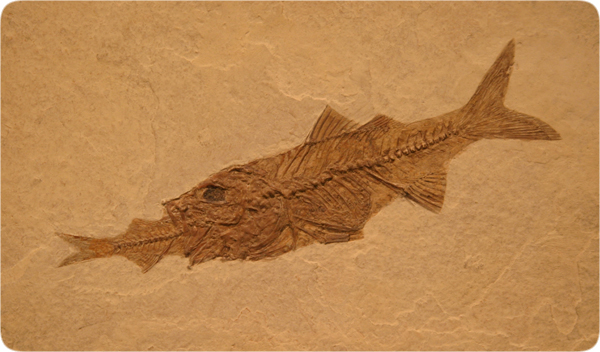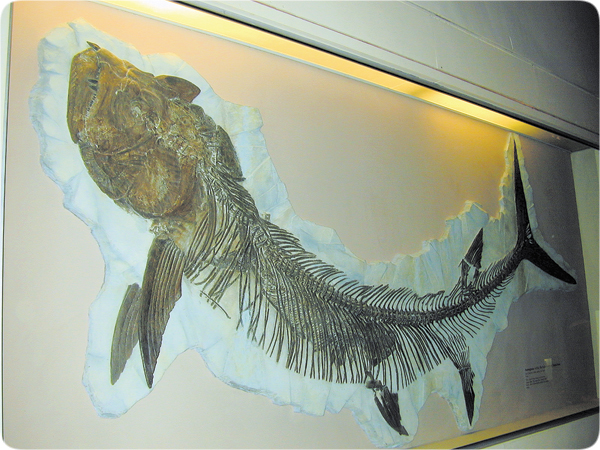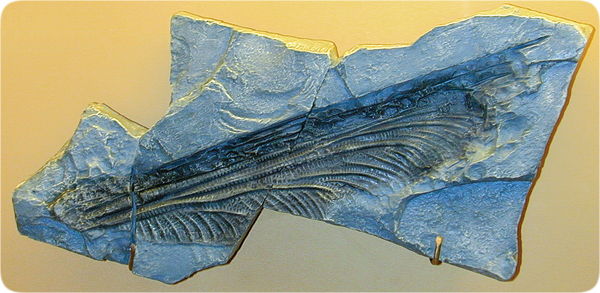A copy paste does not evidence make.
But according to your own evidence
"
6. She will never be rebuilt (26:14 ).
7. She will never be found again (26:21 )"
There is a modern city of Tyre, inhabiated, we clearly know where it is, even some of the ruins are still there.
I believe that was covered in the post to which you are responding. However, let us take a closer look:
In Ezekiel 26, the prophet mentioned several events that were to occur in Tyre as punishment for the city’s arrogance and merciless actions.
Several aspects of this prophecy deserve attention and close scrutiny. The prophet predicted: (1) many nations would come against Tyre; (2) the inhabitants of the villages and fields of Tyre would be slain; (3) Nebuchadnezzar would build a siege mound against the city; (4) the city would be broken down and the stones, timber, and soil would be thrown in “the midst of the water;” (5) the city would become a “place for spreading nets;” and (6) the city would never be rebuilt.
In chronological order, the siege of Nebuchadnezzar took place within a few months of Ezekiel’s prophecy. Josephus, quoting “the records of the Phoenicians,” says that Nebuchadnezzar “besieged Tyre for thirteen years in the days of Ithobal, their king” (
AgainstApion, 1.21). The length of the siege was due, in part, to the unusual arrangement of the mainland city and the island city. While the mainland city would have been susceptible to ordinary siege tactics, the island city would have been easily defended against orthodox siege methods (Fleming, p. 45). The historical record suggests that Nebuchadnezzar destroyed the mainland city, but the siege of the island “probably ended with the nominal submission of the city” in which Tyre surrendered “without receiving the hostile army within her walls” (p. 45). The city of Tyre was besieged by Nebuchadnezzar, who did major damage to the mainland as Ezekiel predicted, but the island city remained primarily unaffected.
It is at this point in the discussion that certain skeptics view Ezekiel’s prophecy as a failed prediction. Farrell Till stated: “Nebuchadnezzar did capture the mainland suburb of Tyre, but he never succeeded in taking the island part, which was the seat of Tyrian grandeur. That being so, it could hardly be said that Nebuchadnezzar wreaked the total havoc on Tyre that Ezekiel vituperatively predicted in the passages cited” (n.d.). Till and others suggest that the prophecies about Tyre’s utter destruction refer to the work of Nebuchadnezzar.
After a closer look at the text, however, such an interpretation is misguided. Ezekiel began his prophecy by stating that “many nations” would come against Tyre (26:3). Then he proceeded to name Nebuchadnezzar, and stated that “he” would build a siege mound, “he” would slay with the sword, and “he” would do numerous other things (26:7-11). However, in 26:12, the pronoun shifts from the singular “he” to the plural “they.” It is in verse 12 and following that Ezekiel predicts that “they” will lay the stones and building material of Tyre in the “midst of the waters.” The shift in pronouns is of vast significance, since it shifts the subject of the action from Nebuchadnezzar (he) back to the many nations (they). Till and others fail to see this shift and mistakenly apply the utter destruction of Tyre to the efforts of Nebuchadnezzar.
Furthermore, Ezekiel was well aware of Nebuchadnezzar’s failure to destroy the city. Sixteen years after his initial prediction, in the 27th year of Johoiachin’s captivity (
circa 570 [SIZE=-1]B.C.[/SIZE]), he wrote: “Son of man, Nebuchadnezzar king of Babylon caused his army to labor strenuously against Tyre; every head was made bald, and every shoulder rubbed raw; yet neither he nor his army received wages from Tyre, for the labor which they expended on it” (29:18). Therefore, in regard to the prophecy of Tyre as it relates to Nebuchadnezzar’s activity, at least two of the elements were fulfilled (i.e., the siege mound and the slaying of the inhabitants in the field).
Regarding the prediction that “many nations” would come against Tyre, the historical records surrounding the illustrious city report such turmoil and war that Ezekiel’s prophecy looks like a mild understatement of the facts. After Nebuchadnezzar’s attack of the city “a period of great depression” plagued the city which was assimilated into the Persian Empire around 538 [SIZE=-1]B.C.[/SIZE] (Fleming, p. 47). In 392 [SIZE=-1]B.C.[/SIZE], “Tyre was involved in the war which arose between the Persians and Evagorus of Cyprus” in which the king of Egypt “took Tyre by assault” (p. 52). Sixty years later, in 332, Alexander the Great besieged Tyre and crushed it (see below for further elaboration). Soon after this defeat, Ptolemy of Egypt conquered and subjugated Tyre until about 315 [SIZE=-1]B.C.[/SIZE] when Atigonus of Syria besieged Tyre for 15 months and captured it (Fleming, p. 65). In fact, Tyre was contested by so many foreign forces that Fleming wrote: “It seemed ever the fate of the Phoenician cities to be between an upper and a nether millstone” (p. 66). Babylon, Syria, Egypt, Rome, Greece, Armenia, and Persia are but a sampling of the “many nations” that had a part in the ultimate destruction of Tyre. Thus, Ezekiel’s prophecy about “many nations” remains as a historical reality that cannot be successfully gainsaid.
ADDITIONAL ASPECTS OF THE PROPHECY OF TYRE
One of the most disputed aspects concerning Ezekiel’s prophecy is the statement that the city of Tyre would “never be rebuilt” (26:14), and “be no more forever” (28:19). The skeptic points to modern day Tyre and suggests that these statements have failed to materialize. Till stated: “In fact, Tyre still exists today, as anyone able to read a map can verify. This obvious failure of a highly touted Old Testament prophet is just one more nail in the coffin of the Bible inerrancy doctrine” (n.d.).
Several possible solutions dissolve this alleged problem. First, it could be the case that the bulk of Ezekiel’s prophecy dealt with the mainland city of Tyre, the location of which has most likely been lost permanently and is buried under the waters of the Mediterranean Sea. This solution has merit for several reasons. In approximately [SIZE=-1]A.D.[/SIZE] 1170, a Jewish traveler named Benjamin of Tudela published a diary of his travels. “Benjamin began his journey from Saragossa, around the year 1160 and over the course of thirteen years visited over 300 cities in a wide range of places including Greece, Syria, Palestine, Mesopotamia and Persia” (Benjamin of Tudela, n.d.). In his memoirs, a section is included concerning the city of Tyre.
From Sidon it is half a day’s journey to Sarepta (Sarfend), which belongs to Sidon. Thence it is a half-day to New Tyre (Sur), which is a very fine city, with a harbour in its midst.... There is no harbour like this in the whole world. Tyre is a beautiful city.... In the vicinity is found sugar of a high class, for men plant it here, and people come from all lands to buy it. A man can ascend the walls of New Tyre and see ancient Tyre, which the sea has now covered, lying at a stone’s throw from the new city. And should one care to go forth by boat, one can see the castles, market-places, streets, and palaces in the bed of the sea (1907, emp. added.).
From this twelfth-century [SIZE=-1]A.D.[/SIZE] text, then, we learn that by that period of time the city known as ancient Tyre lay completely buried beneath the sea and a new city, most likely on some part of the island, had been erected. George Davis, in his book
Fulfilled Prophecies that Prove the Bible, included a picture of Syrian fishermen under which the following caption appeared: “Syrian fishermen hauling in their nets on the probable site of ancient Tyre, which perished as predicted by the prophet” (1931, p. 11). In his monumental work on the city of Tyre, Katzenstein mentioned several ancient sources that discussed the position of “Old Tyre.” He wrote: “Later this town was dismantled by Alexander the Great in his famous siege of Tyre and
disappeared totally with the change of the coastline brought about by the dike and the alluvial deposits that changed Tyre into a peninsula” (1973, p. 15, emp. added).
It very likely is the case that the specific site of ancient Tyre has been buried by sand and water over the course of the last 2,500 years and is lost to modern knowledge. That the prophet was speaking about the mainland city in reference to many aspects of his prophecy has much to commend it. It was to that mainland city that King Nebuchadnezzar directed most of his attention and destructive measures described in Ezekiel 26:8-11. Furthermore, it was the mainland city that Alexander destroyed completely and cast into the sea to build his causeway to the island city. In addition, Benjamin Tudela’s quote corresponds precisely to the statement that the prophet made in the latter part of chapter 26: “For thus says the Lord God: ‘When I make you a desolate city, like the cities that are not inhabited,
when I bring the deep upon you, and great waters cover you’” (26:19, emp. added). In addition, Katzenstein noted that the scholar H.L. Ginsberg has suggested that the name “Great Tyre” was given to the mainland city, while the island city was designated as “Little Tyre” (p. 20). He further noted 2 Samuel 24:7, which mentions “the stronghold of Tyre,” and commented that this “may refer to “Old Tyre,” or the mainland city (p. 20).
Besides the idea that the bulk of the prophecy dealt with the mainland city, other possible solutions exist that would sufficiently meet the criteria that Tyre would “never be rebuilt” and would “be no more forever.” While it is true that a city does currently exist on the island, that city is not a “rebuilt” Tyre and has no real connection to the city condemned by Ezekiel other than its location. If the history of Tyre is traced more completely, it becomes evident that even the island city of Tyre suffered complete destruction. Fleming noted that in approximately [SIZE=-1]A.D.[/SIZE] 193. “Tyre was plundered and burned after a fearful slaughter of her citizens” (1966, p. 73). Around the year 1085, the Egyptians “succeeded in reducing Tyre, which for many years had been practically independent” (p. 85). Again, in about 1098, the Vizier of Egypt “entered the city and massacred a large number of people” (p. 88). In addition, the city was besieged in [SIZE=-1]A.D.[/SIZE] 1111 (p. 90), and again in April of 1124 (p. 95). Around the year 1155, the Egyptians entered Tyre, “made a raid with fire and sword...and carried off many prisoners and much plunder” (p. 101).
In addition to the military campaigns against the city, at least two major earthquakes pummeled the city, one of which “ruined the wall surrounding the city” (p. 115). And ultimately, in [SIZE=-1]A.D.[/SIZE] 1291, the Sultan Halil massacred the inhabitants of Tyre and subjected the city to utter ruin. “Houses, factories, temples, everything in the city was consigned to the sword, flame and ruin” (p. 122). After this major defeat in 1291, Fleming cites several travel logs in which visitors to the city mention that citizens of the area in 1697 were “only a few poor wretches...subsisting chiefly upon fishing” (p. 124). In 1837, another earthquake pounded the remains of the city so that the streets were filled with debris from fallen houses to such a degree that they were impassable (p. 128).
Taking these events into consideration, it is obvious that many nations continued to come against the island city, that it was destroyed on numerous occasions, and that it became a place for fishing, fulfilling Ezekiel’s prediction about the spreading of nets. Furthermore, it is evident that the multiple periods of destruction and rebuilding of the city have long since buried the Phoenician city that came under the condemnation of Ezekiel. The
Columbia Encyclopedia, under its entry for Tyre, noted: “The principal ruins of the city today are those of buildings erected by the Crusaders. There are some Greco-Roman remains, but
any left by the Phoenicians lie underneath the present town” (“Tyre,” 2006, emp. added).
Concerning Tyre’s present condition, other sources have noted that “continuous settlement has restricted excavation to the Byzantine and Roman levels
and information about the Phoenician town comes only from documentary sources” (“Ancient Tyre...,” n.d., emp. added). Another report confirmed, “Uncovered remains are from the post-Phoenician Greco-Roman, Crusader, Arab and Byzantine times....
Any traces of the Phoenician city were either destroyed long ago or remain buried under today’s city” (“Ancient Phoenicia,” n.d., emp. added). Thus, the only connection that the present town maintains with the ancient one in Ezekiel’s day is location, and the present buildings, streets, and other features are not “rebuilt” versions of the original city. If Ezekiel’s prophecy extended to the island city as well as the mainland city, it can be maintained legitimately that the ruins lying underneath the city have not been “rebuilt.”
WHEN DID EZEKIEL PROPHESY?
Some have questioned the date of the composition of Ezekiel, due to the prophecy’s amazing accuracy in regard to its predictions concerning Tyre. Yet, the book of Ezekiel has much that lends itself to the idea that it was composed by Ezekiel during the time it claims to have been written. When did Ezekiel write his material? Kenny Barfield noted that, besides a belief that supernatural revelation is impossible, no evidence supports the thesis that Ezekiel’s predictions were penned later than 400 [SIZE=-1]B.C.[/SIZE] Moreover, the book (Ezek. 1:1; 8:1; 33:1; 40:1-4) claims to have been composed by the prophet sometime in the sixth century, [SIZE=-1]B.C.[/SIZE], and Josephus attributes the book to the Hebrew prophet during the time in question (1995, p. 98).
In addition, Ezekiel was included in the Septuagint, which is the “earliest version of the Old Testament Scriptures” available—a translation from Hebrew to Greek which was “executed at Alexandria in the third century before the Christian era” (
Septuagint, 1998,p. i).
Simon Greenleaf, the lawyer who is renowned for having played a major role in the founding of Harvard Law School and for having written the
Treatise on the Law of Evidence, scrutinized several biblical documents in light of the procedures practiced in a court of law. He noted one of the primary laws regarding ancient documents: “Every document, apparently ancient, coming from the proper repository or custody, and bearing on its face no evident marks of forgery, the law presumes to be genuine, and devolves the opposing party the burden of proving it to be otherwise” (1995, p. 16). He then noted that “this is precisely the case with the Sacred Writings. They have been used in the church from time immemorial, and thus are found in the place where alone they ought to be looked for” (pp. 16-17). Specifically in regard to Ezekiel, that is exactly the case. If the prophet wrote it in the sixth century [SIZE=-1]B.C.[/SIZE] his work is exactly where it should be, translated in the Septuagint around the year 250 [SIZE=-1]B.C.[/SIZE], and noted to be from the proper time period by Josephus in approximately [SIZE=-1]A.D.[/SIZE] 90.
Furthermore, the scholarly world recognized the book’s authenticity and original date of composition virtually unanimously for almost 1,900 years. The eminently respected Hebrew scholars Keil and Delitzsch, who wrote in the late 1800s, commented: “The genuineness of Ezekiel’s prophecies is, at the present day, unanimously recognized by all critics. There is, moreover, no longer any doubt that the writing down and redaction of them in the volume which has been transmitted to us were the work of the prophet himself” (1982, 9:16). Indeed, Archer noted that no serious objection to the book’s integrity was even put forth until 1924 (1974, p. 369).
CONCLUSION
So accurate were the prophecies made by Ezekiel that skeptics were forced to suggest a later date for his writings. Yet, such a later date cannot be maintained, and the admission of Ezekiel’s accuracy stands as irrefutable evidence of the prophet’s divine inspiration. With the penetrating gaze that can only be maintained by the Divine, God looked hundreds of years into the future and instructed Ezekiel precisely what to write so that in the centuries following the predictions, the fulfillment of every detail of the prophet’s words could be denied by no honest student of history. “When the word of the prophet comes to pass, the prophet will be known as one whom the Lord has truly sent” (Jeremiah 28:9). Ezekiel’s accurate prophecy adds yet another piece of insurmountable evidence to the fact that “all Scripture is inspired of God” (2 Timothy 3:16).
https://www.apologeticspress.org/apcontent.aspx?category=13&article=1790



